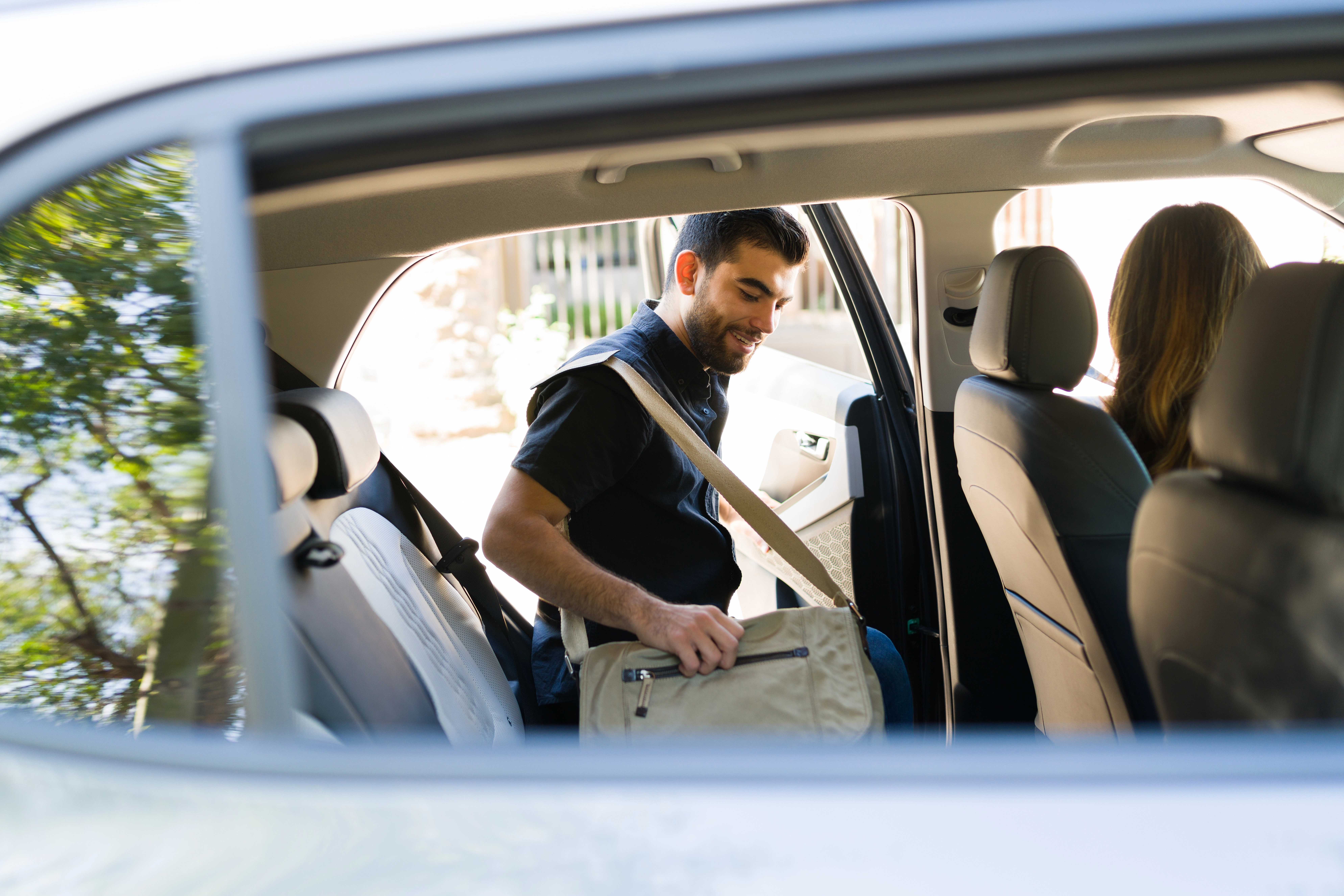Even though Uber’s employer-provided car insurance offers liability coverage to drivers during certain phases of the rideshare process, the coverage has gaps that make the added protection of a rideshare policy a valuable asset. Rideshare insurance costs drivers around $30 per month and can provide essential protection during periods when company-provided insurance is thin.
How Uber insurance works
Your personal car insurance likely doesn’t cover your vehicle while it’s being used for a business purpose, but when you’re driving for a ridesharing company like Uber or Lyft, you’re protected by the company’s car insurance.
Here’s an overview of how your personal insurance and insurance from Uber will both work during each period of the rideshare process.
| Period | When it occurs | Which coverage is active | What’s covered |
| 0 | Any time your rideshare app is off and your car is being used for personal reasons. | Personal insurance. | • Bodily injury (BIL) and property damage liability (PDL) up to your policy limits • Comprehensive and collision coverage up to your policy limits (if you have a full coverage option). |
| 1 | Uber app is on and you’re waiting for a request. | Uber car insurance. | • Minimal contingent liability coverage (typical limits are $50,000/$100,000/$25,000). |
| 2 + 3 | From the time you accept a request until you’re dropping off your passenger. | Uber car insurance. | • $1M third-party liability. • Uninsured/underinsured motorist (UM/UIM) bodily injury insurance. • Contingent collision coverage and comprehensive coverage up to the actual cash value (ACV) of the vehicle — with a $2,500 deductible. |
Note that without full coverage, you will not be eligible for Uber’s insurance to cover the cost to repair your car in Periods 2 and 3.
Uber’s insurance requirements and policies
Let’s take a closer look at Uber’s driver insurance coverage:
Period 0
This is any time your rideshare app is turned off and your car is being driven for personal use. Your individual auto insurance policy will cover you at this stage with no additional protections from Uber’s insurance.
Period 1
In this phase, the Uber app is on and you’re waiting for a ride request. Uber only offers liability insurance during this period, which includes:
- $50,000 in bodily injury liability per person.
- $100,000 in bodily injury liability per accident.
- $25,000 in property damage liability per accident.
The company may obtain more coverage for you, depending on your state’s requirements. If you’re found at fault in an accident during this stage, you’ll be responsible for your medical bills, property damage expenses and any other bills or damages to the other involved party that surpass the company coverage limits, unless you supplement this coverage with rideshare insurance.
Periods 2 and 3
Once you accept a ride request, Uber increases your coverage from when you’re en route to pick up your rider until you drop them off at their destination. Depending on the laws of your state, this additional coverage likely includes:
- $1 million third-party liability in damages or injuries to property, riders and third parties in an accident where you are found at fault.
- Uninsured motorist/underinsured motorist (UM/UIM) bodily injury insurance.
- Contingent collision and comprehensive coverages up to the actual cash value of the vehicle, with a $2,500 deductible.
Depending on your state, Uber may also provide drivers with other protections at this stage of the rideshare process, such as personal injury protection (PIP) or medical payments (MedPay) insurance.
Jerry insightUber’s insurance to cover the cost to repair your car is only available if you have personal collision and comprehensive coverage. So unless you have full coverage on your personal policy, you won’t have financial protection for damage to you or your property in Periods 2 and 3.
Optional rideshare insurance
Because Uber’s coverage is limited and changes depending on what stage of the pick-up and drop-off process you’re in, you may consider purchasing rideshare insurance. This type of coverage is most helpful when drivers are waiting for a ride request.
Rideshare coverage is often added to your personal car insurance policy, so contact your provider if you’re interested in adding it to your package.
The best insurance companies for Uber
Here are some popular insurers that offer rideshare coverage and how the policy works.
| Insurance company | Type of program |
| Geico | Hybrid rideshare insurance policy that works in tandem with your personal car insurance policy. |
| State Farm | Add-on policy option for existing policyholders. |
| Allstate | Ride-for-Hire package that covers Uber’s $2,500 deductible. |
| Progressive | Customizable rideshare insurance package. Current Progressive policyholders must purchase it as an endorsement if they work for Uber. |
| Travelers | Does not offer deductibles for gap coverage; policyholders must pay the Uber deductible if involved in a crash. |
| USAA | Can cost as low as under $10/month. Does not offer gap coverage deductible. |
Learn more: The best car insurance companies
FAQ
-
Does your personal insurance cover you when driving for Uber?
-
Do Uber drivers need extra car insurance?
-
What documents are needed for Uber for car insurance?
-
Does Uber have insurance for drivers?

Megan Lee is an editor, writer, and SEO expert who specializes in insurance, personal finance, travel, and healthcare. She has been published in U.S. News & World Report, USA Today and elsewhere, and has spoken at conferences like that of NAFSA: Association of International Educators. Megan has built and directed remote content teams and editorial strategies for several websites, including NerdWallet. When she`s not crafting her next piece of content, Megan adventures around her Midwest home base where she likes to drink cortados, attend theme parties, ride her bike and cook Asian food.

Everett Cook is an award-winning journalist and editor with more than 10 years of experience across a variety of industries. In editing for Jerry, Everett’s mission is to help readers have a better understanding of the costs of owning or leasing a car and to better understand their vehicle in terms of insurance and repairs. Prior to joining Jerry, Everett was an editor for Axios. His previous work has been featured in The New York Times, The Los Angeles Times, The San Francisco Chronicle, The Atlantic, Atlantic Re:think, The Boston Globe, USA Today, and others. He’s also been a freelance writer and editor with experience in SEO, audience building, and long-term content roadmaps. Everett is a proud graduate of the University of Michigan.









